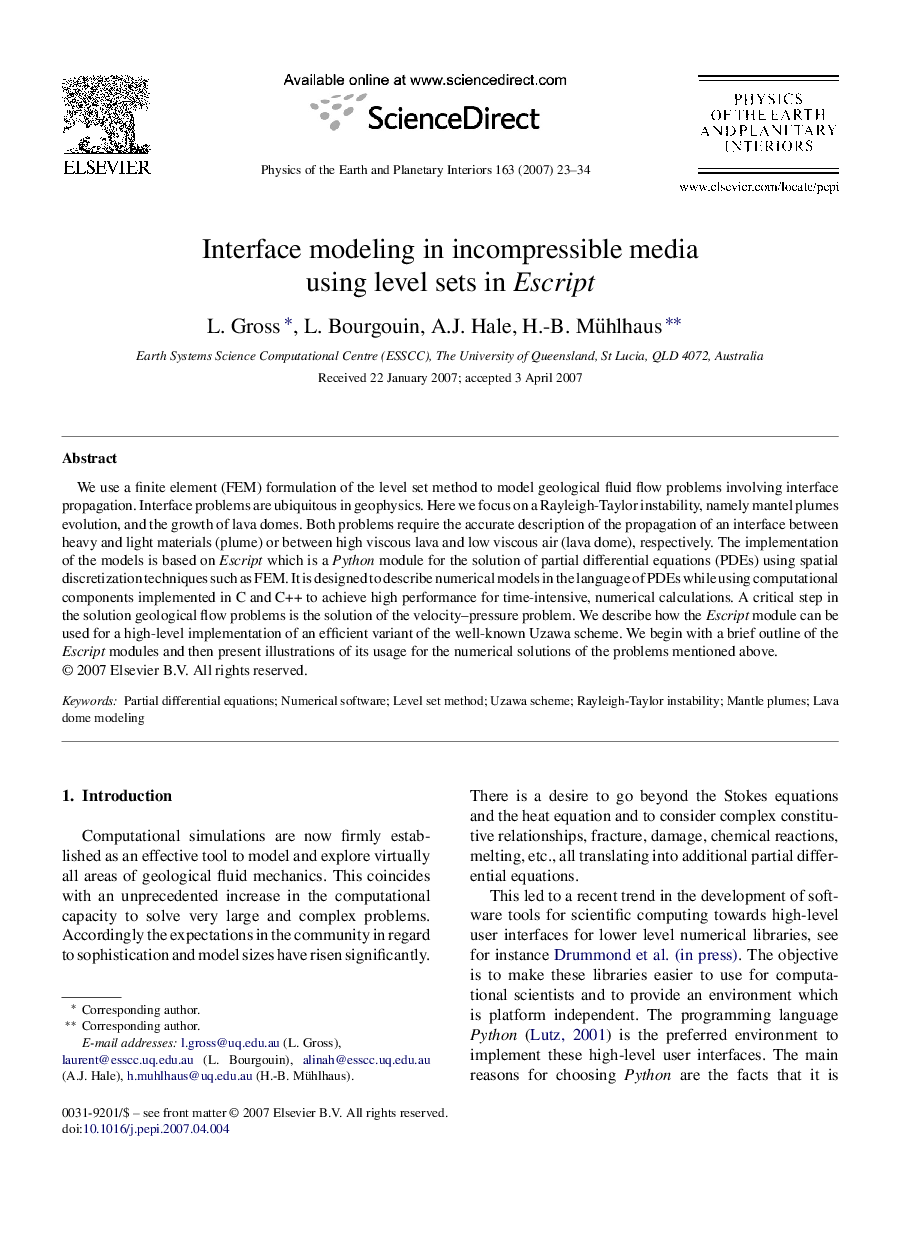| Article ID | Journal | Published Year | Pages | File Type |
|---|---|---|---|---|
| 4742840 | Physics of the Earth and Planetary Interiors | 2007 | 12 Pages |
We use a finite element (FEM) formulation of the level set method to model geological fluid flow problems involving interface propagation. Interface problems are ubiquitous in geophysics. Here we focus on a Rayleigh-Taylor instability, namely mantel plumes evolution, and the growth of lava domes. Both problems require the accurate description of the propagation of an interface between heavy and light materials (plume) or between high viscous lava and low viscous air (lava dome), respectively. The implementation of the models is based on Escript which is a Python module for the solution of partial differential equations (PDEs) using spatial discretization techniques such as FEM. It is designed to describe numerical models in the language of PDEs while using computational components implemented in C and C++ to achieve high performance for time-intensive, numerical calculations. A critical step in the solution geological flow problems is the solution of the velocity–pressure problem. We describe how the Escript module can be used for a high-level implementation of an efficient variant of the well-known Uzawa scheme. We begin with a brief outline of the Escript modules and then present illustrations of its usage for the numerical solutions of the problems mentioned above.
